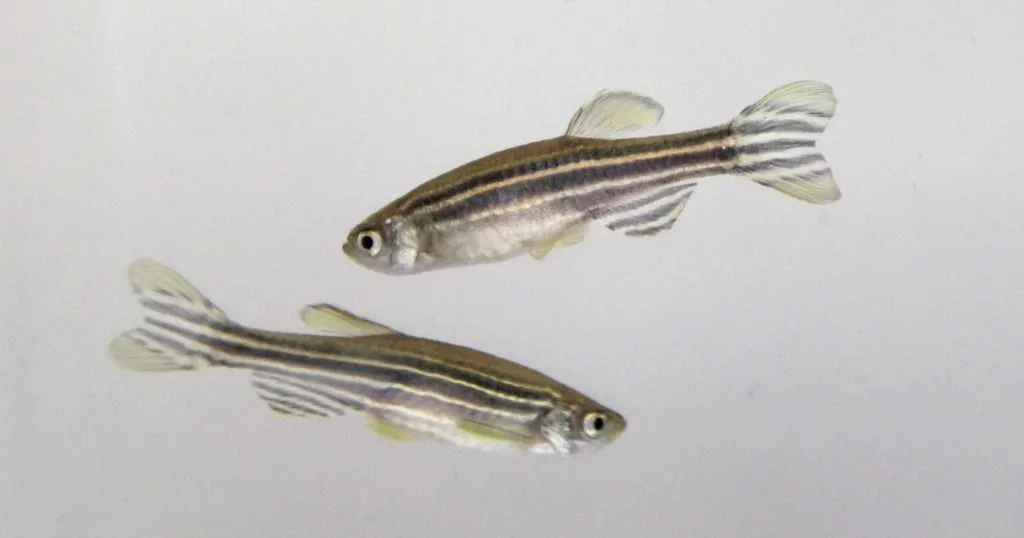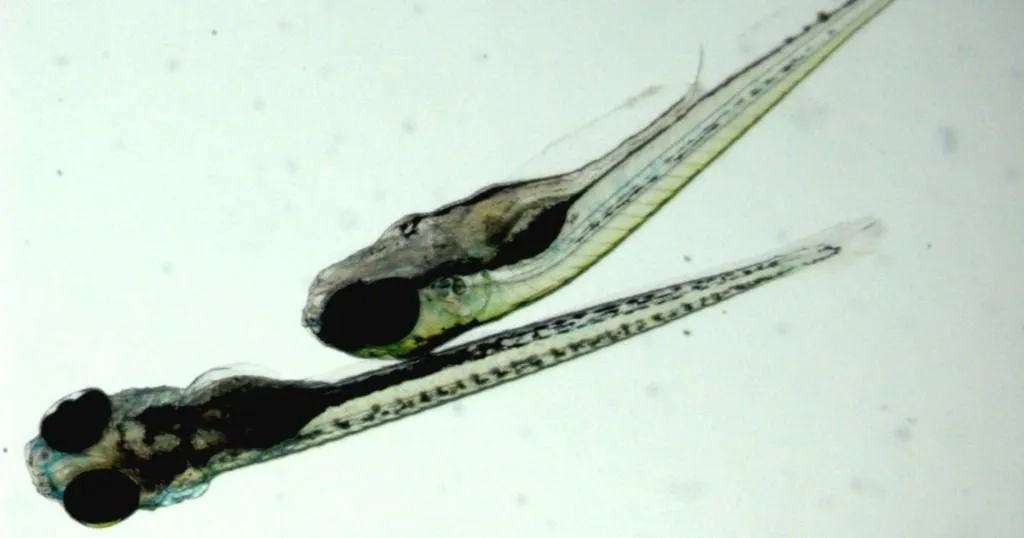Tracking tiny transparent fish with EthoVision XT
Danionella cerebrum, a recently discovered cyprinid fish, has the smallest known vertebrate brain. What are the behavioral differences or similarities to their zebrafish relatives?
Posted by
Published on
Thu 06 Oct. 2022
Topics
| Anxiety | Behavior Recognition | Danio Rerio | Fish |
Cover image credit: Dr. Ralf Britz, Senckenberg Society for Nature Research
What can we learn from the smallest known vertebrate brain? Isn’t bigger better? Sometimes it is easier to see when structures are larger. However, in the case of the recently discovered Danionella cerebrum, a new window (of opportunity) is opened through which we can take a live look into a working and developing brain. Read further on how the latest technology is applied in this rapidly growing niche of behavioral neuroscience.
Tracking tiny transparent fish with the smallest known vertebrate brain
Danionella is a genus of small freshwater cyprinid fish. Recently, a new species within this genus was discovered in a mountainous range in Myanmar: Danionella cerebrum. This newly discovered fish got its name (cerebrum: Latin for ‘brain’) by having the smallest currently known adult vertebrate brain.
This new species of Danionella was previously misidentified as Danionella translucida, since the two species share great external similarities, making it challenging to identify the taxonomic differences. However, a thorough comparative morphological and molecular taxonomic analysis of Danionella translucida and Danionella cerebrum revealed several differences, e.g. in skeletal characters, and clearly showed that these were two different species, which, according to molecular analysis, separated from each other about 13 million years ago [1].

Image credit: Dr. Ralf Britz, Senckenberg Society for Nature Research
Taking a look into the brain of a fish
The different species within the genus of Danionella are currently beginning to emerge as important neurophysiological model organisms for (behavioral) neuroscience. The brain functions of these fish can be studied at a cellular level due to their miniature size, simple anatomy, highly specialized communication system and optical translucency.
Evolutionary, Danionella cerebrum, is also closely related to the zebrafish, Danio rerio, a well-established model within behavioral neuroscience, which, like Danionella cerebrum, also displays a rich behavioral repertoire.
A recent study by Nina Lindemann et al [2] aimed to compare larval locomotor activity between Danionella cerebrum and zebrafish in a light-dark test, measuring the startle response and other behaviors.
Video tracking in fish: EthoVision XT meets Danionella
Lindemann et al used a custom-built Noldus observation chamber, which is powered and controlled by EthoVision XT, to determine the behavioral differences between Danionella cerebrum and zebrafish larvae.
FREE TRIAL: Try EthoVision XT yourself!
Request a free trial and find out what EthoVision XT can do for your zebrafish research!
- Track zebrafish adult, larvae or embryo
- Suitable for tracking in any arena
- Most cited video tracking system
Thigmotaxis
Thigmotaxis in the light-dark test was assessed by defining an outer and inner zone (with an equal surface area) within each well of a 12-well plate, wherein during 80 minutes, the light was switched on – and off – two times each. Switching and timing between the light-dark states was controlled using Noldus’ USB-IO box, which was integrated with the researchers' custom-built setup and EthoVision XT.
After measuring an average larval body length of 4.2 mm, the authors set a movement threshold between 0.42 and 0.84 mm/s (averaging across 3 frames: 100 ms) to differentiate between moving and non-moving larvae. This means that when larvae move less than 1/10 of their body length per second they are considered non-moving, while when they move more than 1/5 of their body length per second they are scored as moving.
Is Locomotor activity different in zebrafish?
At first glance, larval locomotor activity of 4-6 dpf Danionella cerebrum and Danio rerio seems largely similar. Decreases in resting time and increases in velocity in the dark phases (compared to the light phases), for example, were similar between the two species. Also, at 4 dpf, the startle response to illumination changes was different and less pronounced in both species compared to 5 and 6 dpf larvae. Furthermore, at 4 dpf Danionella cerebrum but not zebrafish occasionally showed ‘Rosetta-like’ locomotor patterns.
Thigmotaxis in the light and in the dark
Danionella cerebrum showed an increased thigmotaxis compared to zebrafish during the light, and a strong startle response during a dark-to-light transition. It has also been found that Danionella cerebrum prefers to occupy the lower zone of a water column [3]. All this points towards a preference of this species to be in a dark(er) environment.
Anxiety-like behavior and the environment
Thigmotaxis is associated with anxiety-like behavior. Lindemann et al do not suggest that Danionella cerebrum presents increased levels of anxiety, although they exhibit increased thigmotaxis in the light relative to zebrafish (Danio rerio), instead the authors rather favor an environmental-based hypothesis as a possible explanation.
This seems plausible based on the different natural habitats of Danionella cerebrum and Danio rerio, which may underlie the different startle responses between these two species. Zebrafish larvae respond strongly to a light – dark switch, and weakly to a dark – light switch. While Danionella cerebrum do the opposite: respond strongly to a dark – light switch and weakly to a light – dark switch.
Zebrafish prefer to live closer to the surface
Danionella cerebrum and Danio rerio live at different depths of water bodies. Danionella cerebrum have been reported to live at a depth below 30 cm of the surface, while zebrafish – Danio rerio typically spawn in shallow and clear water near the surface [1, 3]. Indeed ̴80% of Danionella cerebrum was found to occupy the lower zone of a tank (0-12 cm) in a laboratory setting, while zebrafish mainly ( ̴80%) occupy the upper zone of a tank (24-36 cm) [4].
This would explain the typical startle response of zebrafish larvae, which is weaker in dark – light transitions, as they are presumably more accustomed to a lighter environment.
In vivo brain imaging in fish
Both Danionella cerebrum and Danio rerio are uniquely suited for whole-brain (in vivo) brain imaging during their larval stage. The phenotypic behavioral differences (in the light – dark and dark – light responses) discovered in the study by Lindemann et al present an opportunity to investigate the neurophysiological mechanisms and possibly the evolution of neural circuits between these two related species. They are in fact different in their response, while the environmental stimuli are similar.
Behavioral neuroscience models are advancing
The amount of information we are able to gather from such small animal models is ever increasing with advancing technology, which is ultimately pushing the boundaries of behavioral neuroscience. Fish in general are gaining popularity in this field and others since it is proving it's usefullness as an alternative to classic animal testing for various diseases such as cancer, cadiovascular disease, diabetes and other chronic or neurological disorders. The 3 R's of reduction, refinement and replacement of laboratory use of animals comes into play in this perspective which further incentivizes technological advances and alternatives.
FREE DEMO: Find your zebrafish solution
Request a free demo for your zebrafish research.
- Measure activity, heartbeat, and flow
- Track the movement of adult zebrafish
- Control your testing environment
References
- Britz, Ralf; Conway, Kevin W.; Rüber, Lukas (2021). The emerging vertebrate model species for neurophysiological studies is Danionella cerebrum, new species (Teleostei: Cyprinidae). Sci. Reports 2021 111, 11 (1), 1–11. DOI: 10.1038/s41598-021-97600-0
- Lindemann, Nina; Kalix, Leon; Possiel, Jasmin; Stasch, Richard; Kusian, Tamia; Köster, Reinhard Wolfgang; von Trotha, Jakob William (2022). A comparative analysis of Danionella cerebrum and zebrafish (Danio rerio) larval locomotor activity in a light-dark test. Front. Behav. Neurosci., 16, 302. DOI: 10.3389/fnbeh.2022.885775
- Parichy, D.M. (2015) Advancing biology through a deeper understanding of zebrafish ecology and evolution. eLife, 4. DOI: 10.7554/eLife.05635
- Rajan, G.; Lafaye, J.; Faini, G.; Carbo-Tano, M.; Duroure, K.; Tanese, D.; Panier, T.; Candelier, R.; Henninger, J.; Britz, R.; Judkewitz, B.; Gebhardt, C.; Emiliani, V.; Debregeas, G.; Wyart, C.; Del Bene, F. (2022). Evolutionary divergence of locomotion in two related vertebrate species. Cell Rep.38:110585. DOI: 10.1016/j.celrep.2022.110585
Related Posts

Three ways to test hallucinogens on zebrafish

How to mark zebrafish without compromising their behavior
